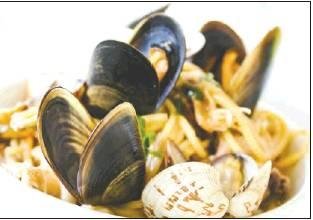Sorry - clam, mussel and oyster season over
Lexington County shell fish lovers can hardy wait for October.
Both clam and oyster season end this month.
That’s when revitalization efforts go into full swing. May 15 was the final day …
This item is available in full to subscribers.
Subscribe to continue reading. Already a subscriber? Sign in
Get 50% of all subscriptions for a limited time. Subscribe today.
Please log in to continueNeed an account?
|
Sorry - clam, mussel and oyster season over
Lexington County shell fish lovers can hardy wait for October.
Both clam and oyster season end this month.
That’s when revitalization efforts go into full swing. May 15 was the final day to harvest oysters and mussels.
It is anticipated to restart Oct. 1.
The state Department of Natural Resources reports that because bacteria levels rise in tandem with the temperature, only commercial entities are allowed to capture shellfish during the hot summer months since their refrigeration and handling procedures are able to be modulated by the U.S. Food and Drug Administration and South Carolina Department of Health and Environmental Control.
“When temperature exceeds 80 degrees, naturally occurring bacteria levels are elevated both in the water and in the filter-feeding shellfish. When these shellfish are harvested the bacteria continue to multiply within the clam or oyster and can reach dangerous levels very quickly … these bacteria can cause serious, sometimes fatal illnesses especially in people with reduced immunity, so this is a serious concern,” said state DNR representative Nancy Hadley.
Statewide shellfish restoration projects will be underway during this offtime to rejuvenate the populations for coming recreational harvesting months.
Hadley said the DNR uses this time of year when oyster reproduction is in gear that lasts until September to develop new beds of eggs by “releasing millions of eggs into the water.”
The DNR also collects the shells of oysters throughout the entirety of the year to further revitalize the population.
“When we harvest oysters, we are taking away the habitat for the next generation. If we return shell to the shoreline, the oyster resource can be self-sustaining,” she said.
“...DNR has observed shells being colonized within a few days of placement in the water.”
Other items that may interest you







Comments
No comments on this item Please log in to comment by clicking here